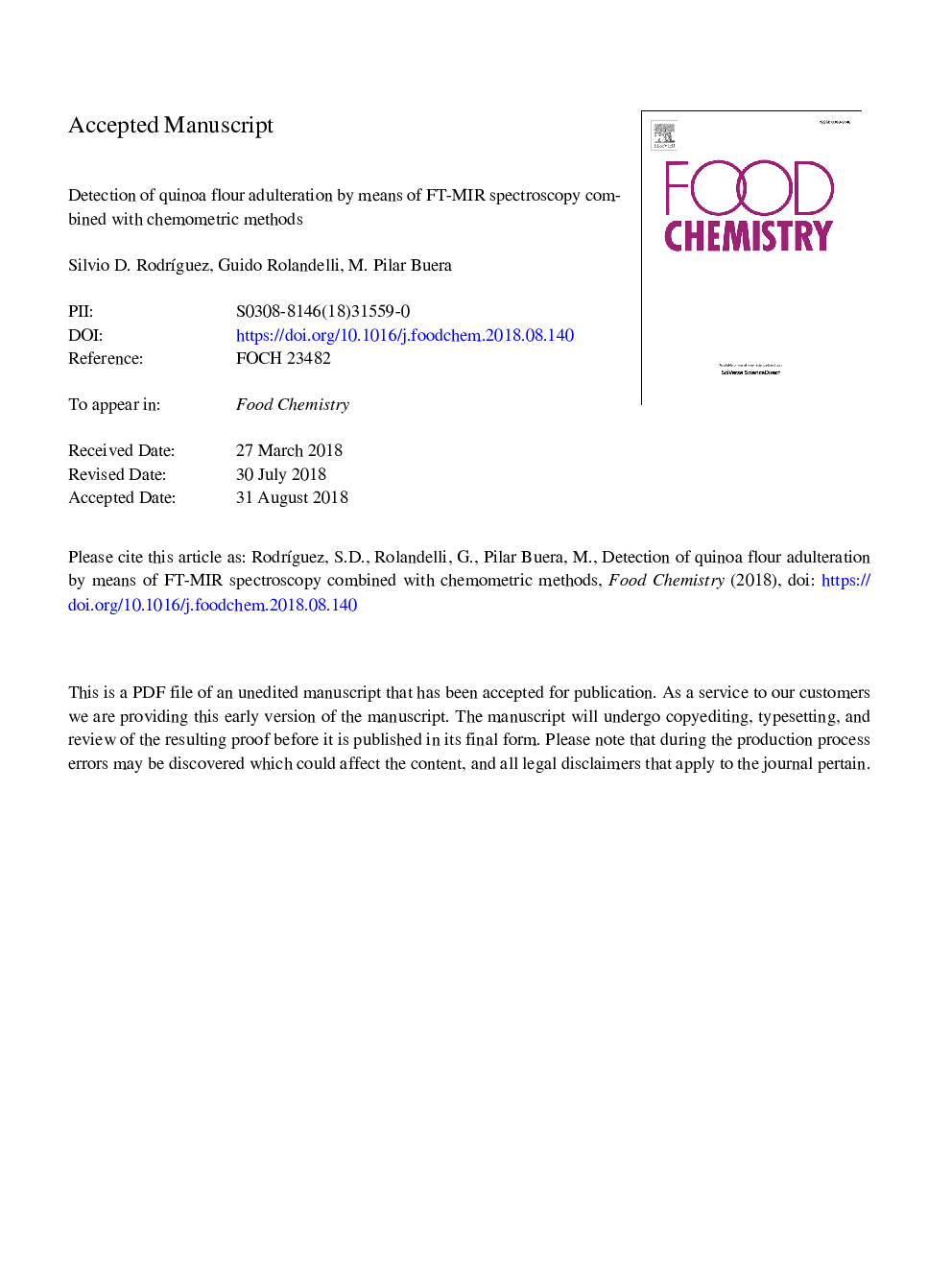| Article ID | Journal | Published Year | Pages | File Type |
|---|---|---|---|---|
| 10140797 | Food Chemistry | 2019 | 35 Pages |
Abstract
Quinoa flour has been receiving an increasing attention as a substitute for wheat flour in bread formulations due to immuno-nutritional features. This growing interest in quinoa has increased the demand and consequently the prices, being a target for possible adulterations with cheaper cereals. Fourier transform Mid-infrared spectroscopy (FT-MIR) was used in the present work as a fingerprinting technique to detect the presence of three adulterants (soybean, maize and wheat flours). Partial least squares discriminant analysis (PLS-DA) and soft independent modelling of class analogy (SIMCA) models were used to classify pure from adulterated samples. 414 samples were measured, including pure quinoa flour, pure adulterant flours and adulterated quinoa flours using three different proportions (10, 5 and 1% w/w). PLS-DA showed better classification results than SIMCA, with error rates from 2 to 8% for the three strategies used to detect the presence of adulterants.
Keywords
Related Topics
Physical Sciences and Engineering
Chemistry
Analytical Chemistry
Authors
Silvio D. RodrÃguez, Guido Rolandelli, M. Pilar Buera,
